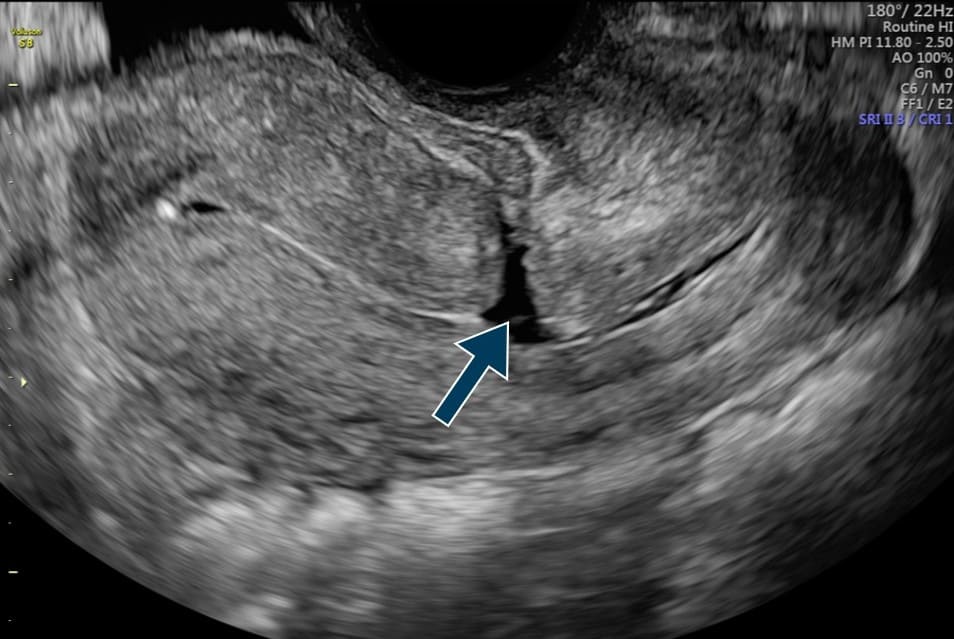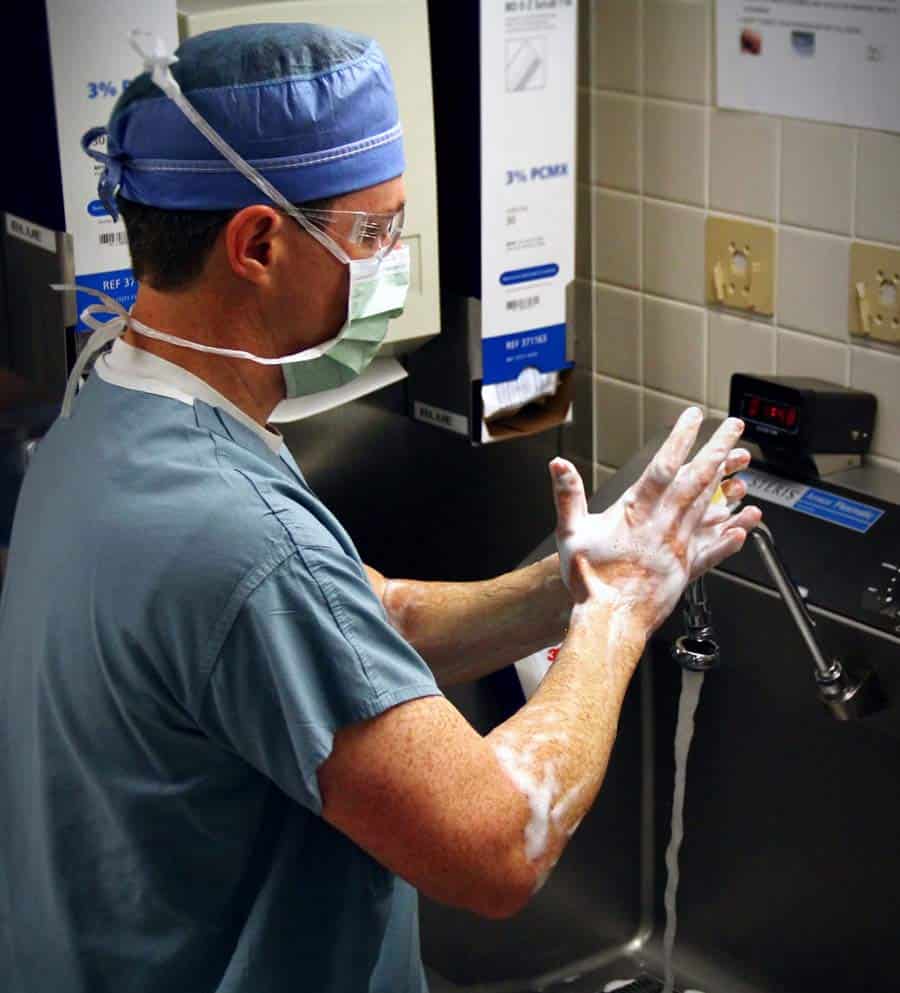Uterine Isthmocele
A uterine isthmocele is a niche or defect on the internal wall of the uterine cavity at the site of a C-section scar. This condition can cause abnormal bleeding and secondary infertility.
When menstrual blood gets trapped inside a uterine isthmocele, it leads to significant inflammation of the uterine lining. This inflammation can cause infertility by killing sperm as they travel through the uterus to the egg and by creating an inhospitable environment for embryo implantation. If a pregnancy does occur in the presence of an untreated uterine isthmocele, there is a higher risk of miscarriage and even uterine scar rupture, due to the abnormally thin muscle wall at the location of the C-section scar.
What causes a uterine isthmocele?
The exact causes of a uterine isthmocele are not yet well understood, but it is thought to be related to abnormal or incomplete healing of the uterine incision after a C-section. Contributing factors may include the type of suture used to repair the uterus and whether the uterus was repaired in one or two layers.

What are the symptoms of a uterine isthmocele?
The primary symptoms associated with a uterine isthmocele are abnormal bleeding and secondary infertility (the inability to achieve pregnancy after having successfully achieved pregnancy in the past). The bleeding pattern most frequently seen in women with a uterine isthmocele is several days of brown bleeding following the usual bleeding of the period. Spotting between periods or after intercourse or exercise can also sometimes be seen. In some cases, a woman with a uterine isthmocele may have no symptoms.
How is a uterine isthmocele diagnosed?
A uterine isthmocele may be suspected if a woman experiences abnormal bleeding or secondary infertility any time after a C-section. Women who chart their cycles (for example, with the Creighton Model FertilityCare System) can often identify the signs of a uterine isthmocele sooner than women who are not closely monitoring their cycles.
Despite being a relatively common condition, affecting approximately 20% of women who have had a C-section, women with the symptoms of a uterine isthmocele may go a long time without an accurate diagnosis because many physicians are unfamiliar with the condition.

The most accurate way to diagnose a uterine isthmocele is with an ultrasound procedure called a saline infusion sonohysterogram (SIS). An SIS can identify if there is a defect in the uterine wall at the site of the C-section scar and can also determine the remaining thickness of the muscle wall near the scar. While it is common for the uterine wall to be slightly thinner near the C-section scar, women who have a uterine isthmocele can often have a dramatically thinned uterine wall, even less than 1 mm in some cases.

How is a uterine isthmocele treated?
There are several ways to treat a uterine isthmocele, but the most common are by hysteroscopy or laparoscopy.
Hysteroscopic uterine isthmocele treatment:
- The defect is shaved or cauterized from the inside, which helps prevent menstrual blood from being trapped inside the scar.
- Best for women with abnormal bleeding when the uterine muscle wall is > 5 mm thick, and for those who do not intend to get pregnant again.
- Pros: short procedure, rapid recovery (2-3 days)
- Cons: less likely to resolve all abnormal bleeding; does not make the uterine wall any thicker and therefore this is not the preferred method for women who want to achieve pregnancy in the future and who have a very thin uterine muscle wall at the site of the isthmocele.
Laparoscopic uterine isthmocele repair:
- The defect is completely removed, and the muscle wall of the uterus is reconstructed in 2-3 layers of absorbable suture.
- Best for women with abnormal bleeding and a thin uterine muscle wall < 5 mm thick, and for those who want to get pregnant again
- Pros: more likely to completely resolve all abnormal bleeding; allows for healthy pregnancy (lower risk of infertility, miscarriage, and uterine rupture) since the muscle wall is thickened.
- Cons: longer procedure, longer recovery (1-2 weeks), must wait 4 months before it’s safe to get pregnant.
Our Approach
At Veritas Fertility & Surgery, we have extensive experience diagnosing and treating uterine isthmoceles. We recommend that any woman with abnormal bleeding or secondary infertility after a C-section be evaluated for a possible isthmocele with a saline infusion sonohysterogram. Our experience has demonstrated that this is a common condition and one that should be accurately diagnosed so that treatment options can be discussed.
Dr. Puthoff is one of just a few reproductive surgeons with extensive experience in the evaluation and treatment of uterine isthmoceles, especially among patients with infertility due to the condition. Effective surgical treatment of this condition can help restore optimal reproductive health, and women with infertility who have a uterine isthmocele repair have a 75-80% chance of subsequently achieving a healthy pregnancy.

